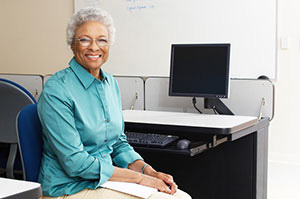 Recently I took a trip to Martha’s Vineyard in Massachusetts, and some friends told me about this Polar Bear experience I just had to have while on the island. They would not tell me much about it, but the warmth with which they described this experience convinced me it was something to try.
Recently I took a trip to Martha’s Vineyard in Massachusetts, and some friends told me about this Polar Bear experience I just had to have while on the island. They would not tell me much about it, but the warmth with which they described this experience convinced me it was something to try.
The Polar Bear experience has been taking place for more than 60 years at the Inkwell, a beach on Martha’s Vineyard with strong African American ties. It opens the fourth of July and closes Labor Day weekend. According to the Vineyard Gazette, there are three types of Polar Bears who meet at 7:30 a.m.: swimming bears, nonswimming bears (“bear-watchers and talkers”), and the exercise bears.
I met my friends early in the morning to be an exercise Polar Bear. We walked to the Inkwell, and there were people, mostly African American women, holding hands, making their way into the water. As I approached the water, one of my friends said, “Let me hold your hand,” and we proceeded into the water to join the others.
Instantly, I felt part of the family. From holding of hands, songs, chants, and movement, to the engaging leaders who seemed to truly “see” all of us, I felt like I was part of this family.
I thought, “This is a perfect example of culturally responsive teaching that can used in classrooms all across the United States to reach all students, but especially those who have been marginalized by society and those who come from communal backgrounds such as African American and Hispanic students.”
Here are the Polar Bear lessons we can take into our classrooms:
Create community in the classroom
Oftentimes we tell students, especially high school students, to work independently. However, many of our minority students come from communal backgrounds, and we thrive and grow when we can help each other. With the Polar Bear experience, the more experienced were helping the new bears, instantly creating a sense of community. At one point, the new Polar Bears were asked to move to the middle of the circle. Being new, I was reluctant, and an older Polar Bear took my hand and went with me to the middle of the circle. Even I, a grown woman, needed this gesture to ease my anxiety.
Establish routines and rituals
People thrive off of routine, and they work in any classrooms along with norms that help students to feel they belong. Whenever I start singing, “Started from the bottom, now we’re here,” my students instantly join in and know that we would be referring to Bloom’s taxonomy. The Polar Bears sang their same songs, at the same time, and there was a sense of comfort in my next visit, because I knew exactly what to expect. Oh, the joy I felt in being able to help new Polar Bears.
Celebrate individuality
It is important that students are viewed not only as individuals but also as part of the group. It is important to celebrate differences in the classroom: culture, family dynamics, race, religion, gender, and so forth. Near the end of the Polar Bear session, there is a chant. People are called upon to call out a dance or move for the group to do. This is the part of the routine where individual personalities are highlighted and celebrated. Because a sense of community and trust was established, this was the time when people took risks and allowed their “little light shine.”
I had been on vacation and looking forward to lots of rest and relaxation, but because of the sense of community I felt at the Polar Bear experience, I got up most mornings to attend those 7:30 sessions. When we create community in our classrooms, establishment routines, and celebrate individuality, our students will continue to want to come back home—to our classrooms.
 Jacqueline Stallworth is a high school English teacher in Northern Virginia and the writer of a literary blog, The Big Sea. She is also the founder of Stallworth Educational Consulting Team, a company committed to having school curriculum reflect the diverse world in which we live.
Jacqueline Stallworth is a high school English teacher in Northern Virginia and the writer of a literary blog, The Big Sea. She is also the founder of Stallworth Educational Consulting Team, a company committed to having school curriculum reflect the diverse world in which we live.